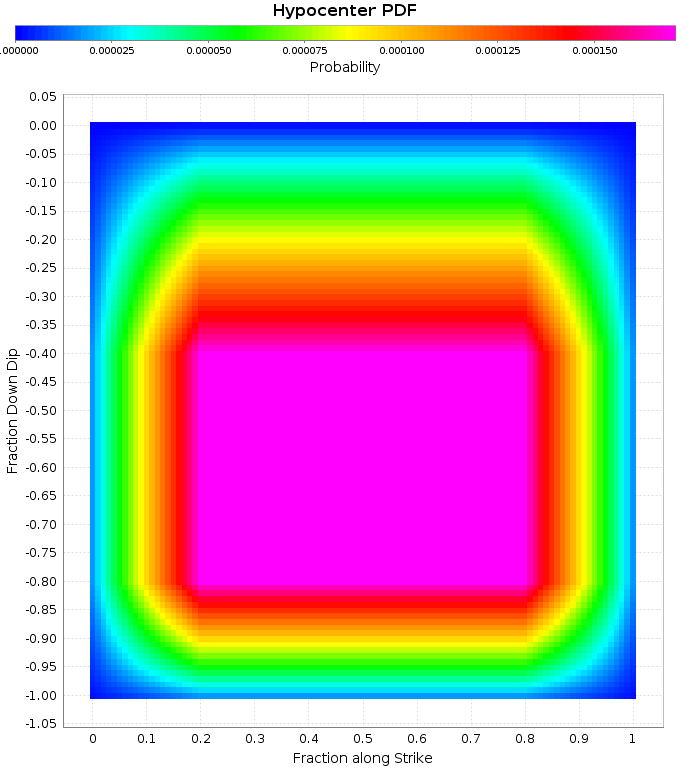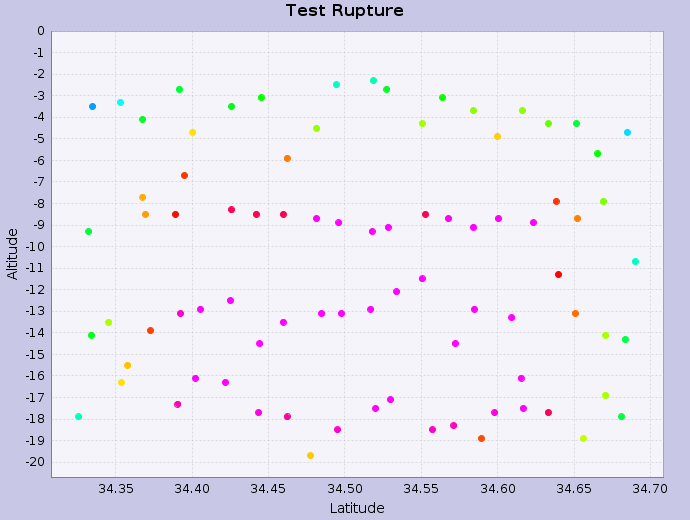Difference between revisions of "CyberShake Tapered Hypocenter Implementation"
| Line 12: | Line 12: | ||
[[File:CyberShake_15_4_Hypocenter_pdf_theoretical.png]] | [[File:CyberShake_15_4_Hypocenter_pdf_theoretical.png]] | ||
| + | |||
| + | We calculate the hypocenter location for each rupture variation with srf_gethypo. This returns the grid point with the earliest slip in the SRF file, which is not necessarily identical to the input hypocenter location in the rupture generator. | ||
| + | |||
| + | We then calculate fractional distance along strike and down depth for each hypocenter and apply the taper. Here are the tapered hypocenters for an example SAF Mojave S rupture: | ||
| + | |||
| + | [[File:CyberShake_15_4_Hypocenter_PDF_Mojave.png]] | ||
Revision as of 23:46, 26 May 2015
Motivation
CyberShake Study 15.4 uses the Graves and Pitarka (2015) rupture generator with a uniform hypocenter distribution, including multiple rows of hypocenters down dip. Thus far we have weighted all CyberShake rupture variations equally. This page documents efforts to modify these hypocenter probabilties, reducing probabilities of hypocenters at the edges of the fault. This is similar to the weighted random calculation done by Graves and Pitarka (2015) when random hypocenters are enabled.
Tapered Hypocenter PDF
We apply a taper as follows:
Taper the first and last 20% along strike, starting with 10% weight at each edge. Taper the top (shallowest) 40% and bottom (deepest) 20% of the fault, starting with 1% weight at the top and 10% on the bottom.
Here is the resultant probability density function (PDF)
We calculate the hypocenter location for each rupture variation with srf_gethypo. This returns the grid point with the earliest slip in the SRF file, which is not necessarily identical to the input hypocenter location in the rupture generator.
We then calculate fractional distance along strike and down depth for each hypocenter and apply the taper. Here are the tapered hypocenters for an example SAF Mojave S rupture:

